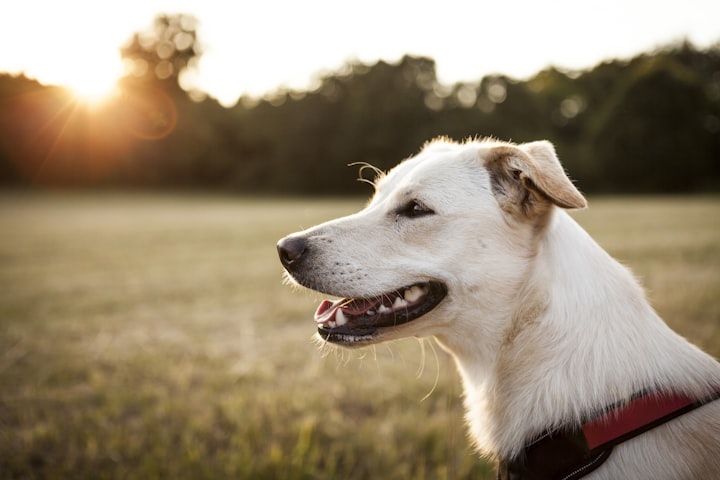
Compared to humans, dogs have a distinctive visual perception. There are notable differences as well as some similarities to human vision. Here are some significant features of what canines see:
1. Limited Color Vision: Dogs are often said to be colorblind, but this is not entirely accurate. They can see some colors, but their color vision is limited compared to humans. Dogs primarily see the world in shades of blue and yellow, with some ability to differentiate between these two colors. Red and green colors appear as varying shades of gray to them.
2. Better Low-Light Vision: Dogs have a higher number of rod cells in their retinas compared to humans. Rod cells are specialized for low-light vision and motion detection. This means that dogs have better night vision than humans, and they can see well in dim lighting conditions.
3. Motion Detection: Dogs are excellent at detecting motion. Their eyes are adapted to pick up even slight movements, which is an essential ability for hunting and tracking prey.
4. Peripheral Vision: Dogs have a wider field of view than humans. Their eyes are positioned more to the sides of their heads, giving them broad peripheral vision that allows them to detect movement and objects in their surroundings.
5. Blurred Details: While dogs have excellent motion detection and peripheral vision, their visual acuity (the ability to see fine details) is not as sharp as that of humans. They see the world in a somewhat blurred or less defined way compared to our clear, high-resolution vision.
6. UV Light Detection: Dogs can see some ultraviolet (UV) light, which is invisible to humans. This ability might help them detect certain patterns or substances that are otherwise invisible to us.
7. Poor Depth Perception: Dogs have less depth perception than humans because their eyes are positioned on the sides of their heads rather than facing forward like ours. They rely more on other cues, such as motion and parallax, to judge distances.
8. Preference for Contrast: Dogs tend to see the world in terms of contrast. They are more likely to notice objects or movements that stand out from their surroundings, even if they cannot see fine details.
9. Limited color vision: Dogs are not colorblind, but their color perception is limited compared to humans. They primarily see the world in shades of blue and yellow. Red and green hues appear as various shades of gray to them. This is because dogs have only two types of color receptors (cones) in their eyes, whereas humans have three.
10. Enhanced motion detection: Dogs have a high sensitivity to motion. They can detect even subtle movements, making them excellent at tracking moving objects or animals. This ability is particularly advantageous for hunting and other activities.
11. Better low-light vision: Dogs have superior night vision compared to humans due to a larger number of rod cells in their retinas. Rod cells are specialized for low-light conditions and provide better vision in dim or dark environments.
12. Wider field of view: Dogs have a wider field of view than humans, which allows them to detect movement and objects in their peripheral vision more effectively. This wide field of vision is advantageous for surveillance and situational awareness.
13. Lower visual acuity: While dogs have excellent motion detection and night vision, their visual acuity (sharpness of vision) is not as high as that of humans. They see objects in less detail and may not be able to distinguish fine details as well as we do.
14. Limited depth perception: Dogs have some degree of depth perception, but it is not as developed as in humans. Depth perception helps in judging distances accurately, which is important for activities such as catching objects in mid-air.
15. Stronger response to certain colors: Dogs may have a heightened response to certain colors like blue and yellow, which are more prominent in their limited color spectrum. Some training aids for dogs use these colors to attract their attention.
16. Flicker sensitivity: Dogs are more sensitive to flickering lights or rapid movements on screens, which can cause discomfort or even distress for some dogs when watching TV or looking at electronic displays.
17. Preference for contrast: Dogs can perceive contrasts well, so objects that stand out from their backgrounds are more noticeable to them. This preference for contrast can be useful in training and communication.
It's important to understand these differences in canine vision to provide appropriate training, design dog-friendly environments, and ensure the well-being of your pet. Dogs rely on their other senses, such as smell and hearing, in conjunction with their vision to navigate the world effectively.
About the Creator
Amin17
My name is Naggara Amin
I have been working in the field of online affiliate marketing for three years






Comments
There are no comments for this story
Be the first to respond and start the conversation.